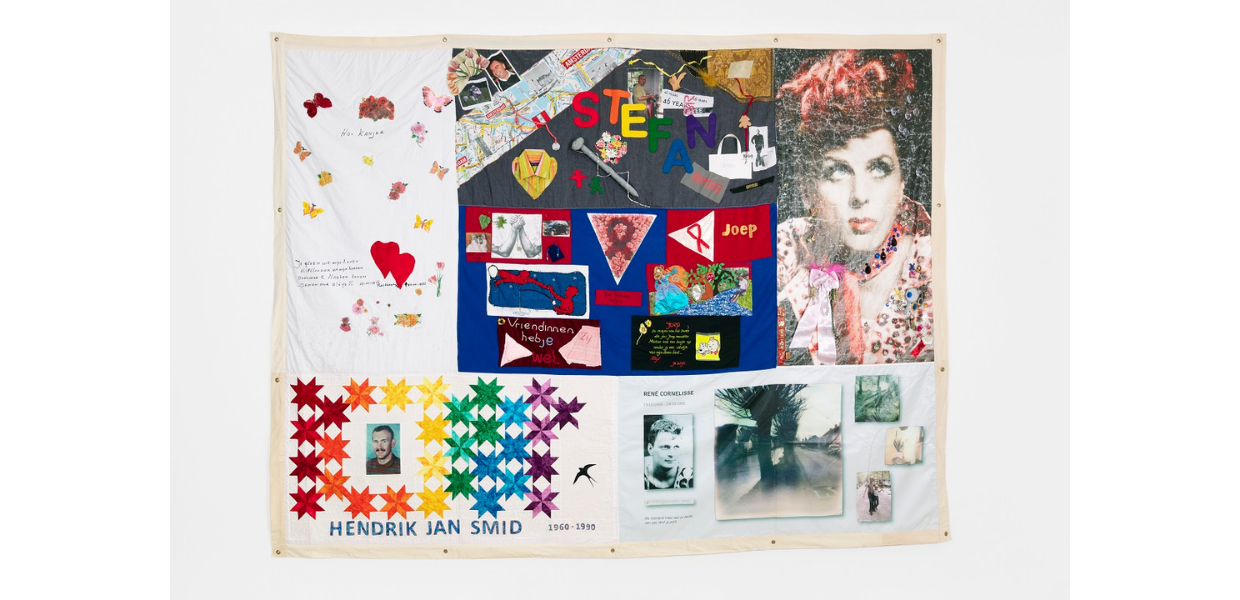The collection is geographically and chronologically diverse and represents our permanent and temporary exhibitions as well as our public collecting actions, such as one on COVID. We’ve chosen objects that are especially revealing or potent, and have both a European relevance and a relevance for today.
For example, I would like to mention Block 30 of the Dutch AIDS Memorial Quilt, a significant example of the actions aimed at commemorating the victims of AIDS, a disease that first came from the United States before spreading throughout Europe and the rest of the world. Created as a memorial, these quilt blocks were also used as a powerful visual tool to raise awareness of the AIDS pandemic. Today, they are either kept by the NAME foundations or are being integrated into museum collections. This quilt block was donated to the House of European History by Aidsfonds/NAMENproject, the Netherlands, and was on display in the museum’s temporary exhibition Restless Youth, Growing up in Europe, 1945 till now, in 2020.
What are the next steps for the House of European History in terms of sharing your collections online?
We’re working on the next batch of objects to be uploaded and looking into how this online collection can become richer, more linked and possibly also offer some type of interactivity for audiences.
We want our online collection to be relevant and for our educators to reuse it for their learning programmes. We’re working on how it can become something we all benefit from across the museum sector, an online collection we can use in our programmes, and of course something that the public visitor enjoys. We’re exploring possibilities like tagging, creating your own gallery, and linking more to other collections.
What change do you hope to see for the House of European History as a result of your new digital approach?
We hope to see a leap forward in our ability to engage with a diversity of audiences. It’s about telling our stories differently, and making sure we have the right tools for it.
For example, for our temporary exhibition on the history of waste in Europe that'll open in 2023, we are working on the physical exhibition as well as a website on which somebody who can't come to the exhibition in Brussels can experience it. We have a partnership with around 10 museums in Europe who will contribute content and co-organise activities. The online content will be a unique and comprehensive offer for digital audiences. And it gives these exhibitions an afterlife - which is a new thing that we have to build on and include in our work systematically.
How does the strategy address building capacity for digital skills?
One thing we want to do is to try and use the knowhow in the institution - we’re a museum attached to the European Parliament where there is already knowledge, training opportunities and colleagues with expertise in digital engagement. And we are trying to recruit people who have those digital skills and background, or are trained in digital humanities, which is an interesting field combining history and the digital.
Thinking specifically about digital transformation in museums - we look to what networks like Europeana, ICOM and NEMO offer and make sure we’re represented there. As well as your day job, you have to commit to time for training and there is a lot available at the moment for museums. And finally, the digital transformation we are undergoing informs also new recruitments in our museum team.




